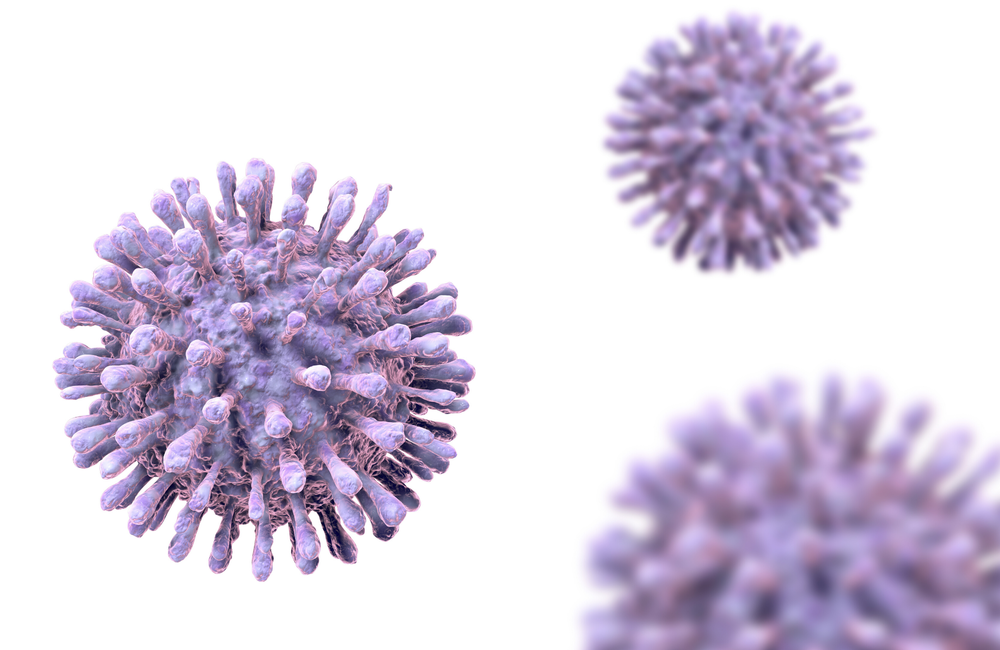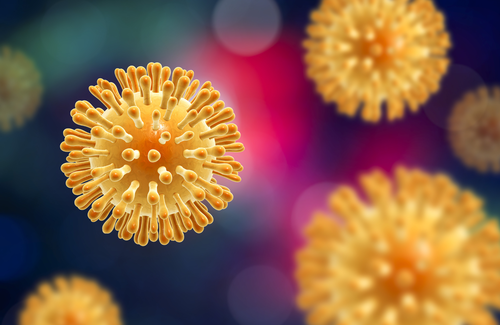
Researchers in Sydney, Australia have identified a patient who appears to have spontaneously cleared his own HIV infection without any medication, many years after he was first infected.
However “Subject C135” appears to have a unique combination of fortunate circumstances that only serve to show how difficult it is to eliminate HIV infection once it is established. The researchers warn that we do not yet know if the same characteristics could be re-created in other people with HIV by artificial means such as genetic engineering and vaccines.
The Sydney Blood Bank Cohort
Subject C135 was infected in 1981, aged 34, when he needed a blood transfusion after a car accident. Now 72, he belongs to a group of eight people who were all infected by the same donor; these, plus the donor, form a group called the Sydney Blood Bank Cohort (SBBC).
The SBBC patients originally drew attention because all of them appeared to be elite controllers: they were asymptomatic and with stable CD4 counts despite not being on medication. Most of them were identified by 1991, though C135 himself was not identified till 1996, when all recipients of transfusions from the donor, D36, were traced.
Another member was posthumously identified: this person died aged 22 in 1987 with the autoimmune disease lupus, which necessitated immune-suppressant therapy; because of this, HIV-related conditions may have contributed to their death. Two members of the cohort died between 1994 and 1999, of non-HIV-related causes, aged 77 and 83.
The other six and the donor remain alive, but only three are still elite controllers, maintaining undetectable viral loads off therapy. The donor started antiretroviral therapy in 1999 after a CD4 count decline and the appearance of neurocognitive symptoms, and the other three since then.
In 2011 a study of the remaining three elite controllers found that the factor that most distinguished them from other cohort members was a strong CD4-cell response to the p24 capsid protein of HIV. In that paper it was noted that “only one patient, C135, has identifiable genetic polymorphisms that probably contributed to non-progression”. He was described as “unique” even then.
Subject C135
The researchers now feel they have enough evidence so say that C135 represents “a probable case of clearance of HIV infection”, after repeated polymerase chain reaction (PCR) testing of lymphocytes (T-cells) taken from the blood, and from gut and lymph node tissue.
In fact, the last time detectable HIV DNA could be recovered from this patient was in March 1997, 22 years ago. Since then all attempts to find HIV have failed, so he could have in fact been clear of HIV by 1997. The caution about declaring this reflects the difficulty of finding HIV in cells and the fact that in some cases of people with repeatedly undetectable HIV DNA tests, the virus has eventually reappeared.
C135 was definitely infected: the Western Blot test from 1996, which detects specific HIV proteins, shows positive results for p24, the shell protein p18 and the envelope protein gp160. However these were far weaker than normal, showing that HIV was replicating unusually slowly. At this point his CD4 count averaged about 500; it has risen slowly over 20 years to about 750. His CD4:CD8 ratio has stayed at about 1.1 throughout. Although these are within normal ranges, they are at the lower end, reflecting the fact that his immune system may have suffered some damage upon initial infection. His CD38 percentage is within the normal range, varying in recent years between 0.6% and 2%. The CD38 percentage is the proportion of CD8 (T-suppressor) cells that are activated and fighting infection at any one time: it tends to be higher than this in HIV-positive people.
Five pieces of good luck
So these are all normal results: what was atypical about C135? It turns out that apart from the bad luck of receiving a transfusion containing HIV in the first place, he has otherwise had the good luck to benefit from five separate factors that suppress HIV replication and encourage a strong and specific immune response against it.
Subject C135 appears to have a unique combination of fortunate circumstances that only serve to show how difficult it is to eliminate HIV infection once it is established.
The first is the defining characteristic of the SBBC patients: the virus shared between donor and recipients has a piece of DNA missing that encodes a viral gene called nef (negative regulatory factor). Nef amplifies T-cell activation, thus providing new cells for the virus to infect, degrades a cellular antiviral defence called CTLA-4, and sends out a false activation signal from cells that keeps the immune system on alert. The virus was also lacking a section called LTR (long terminal repeat) that acts like the cap at the end of a shoelace, preventing the viral DNA from “fraying”.
Although nef-deficient virus replicates slowly and people with it tend to have lower viral loads, it is not disabled and will eventually cause immune damage to most people.
However the patient had several other characteristics that slowed viral replication still further. The second characteristic is that he was what is called heterozygous for the CCR5 gene. This means that, like 8-10% of people of north European ancestry, he had only one copy of the gene that peppers the surfaces of CD4 cells with the co-receptor molecule CCR5. People with no CCR5 genes – about 1% of north Europeans – are virtually immune to HIV. C135 had 48% of the normal complement of CCR5. It was still possible to infect cells cultured from him in the lab dish with new strains of HIV, but his HIV-suppressant CD8 cells had to be killed before infection could take place.
The third characteristic is that although his immune system was in general not overly responsive to HIV, his CD4 cells had a very potent and specific response to a 15-amino-acid length of the HIV gag (shell) protein. These peptides, or short sections of protein, are what virally-infected cells display on their surfaces in order to “call for help” and signal that they are infected. When these stimulate an immune response, they are called epitopes. In other words, C135’s CD4 cells were unusually alert to a particular and very specific signal of viral infection. In response they quickly issued the cell-signalling chemical Interleukin-2 (IL-2) to direct CD8 cells to destroy them.
C135’s fourth characteristic is that he had two cellular immune genes that ensured his response to HIV was particularly efficient, HLA-B57 and HLA-DR13. HLAs (human leukocyte antigens) are the cell-surface molecules that “present” epitopes to the immune system, and some may do this more efficiently than others.
HLA-B57, in particular, is known for two things. Firstly, people with the B5701 variety of this are allergic to the antiretroviral drug abacavir and cannot take it. Secondly, however, HLA-B57 – and HLA-DR13 – are associated with lower HIV viral loads and slower progression. Fifty per cent of long-term non-progressors who stay well off ART for many years have HLA-B57, even though only 1.5% to 5% of most populations carry it.
Subject C135’s sharp CD4 response to HIV was not caused by his having HLA-B57. Rather, the HLA type acted as an intermediary. Once his CD4 cell had fired off IL-2 as an instruction to destroy HIV-infected cells, the efficiency with which his HLA-57 displayed HIV in the surface of cells meant that the effect of the IL-2 was amplified and speeded up, ensuring his fifth and final characteristic, and the one that has probably purged all the HIV-infected cells from his body: a strong and broad CD8 (T-suppressor) cell response to HIV-infected cells. This response was weak unless the CD8 cells were cultured alongside the CD4 cells, showing that the CD4 HIV response needed to happen first, before the CD8 cells ‘understood’ that they had to kill HIV-infected cells.
So C135’s response to HIV was so potent partly it is probably because his virus was slow to replicate and so, during initial infection, his immune system had a chance to develop an effective and specific anti-HIV response, before HIV had a chance to mutate away from vulnerability to that response - what’s been called “immune escape”. HIV usually wins the “arms race” between the body’s immune response and its ability to avoid it, but may occasionally lose the race in situations like this, or during very early treatment, or if already primed to recognise HIV with a vaccine.
In addition, however, he had genetic factors that ensured this early immune response was particularly fast and efficient, which may have ensured that his already slow-acting HIV never had the time to develop resistance to the immune response. Instead, that response did what it does with the majority of viruses that are not HIV - it cleared it.
Could scientists make it happen in others? Probably not yet
So a very specific chain of characteristics had to come together and act sequentially to ensure that the immune response to what was already a weakened virus in one person’s system was strong, specific and fast enough to do what has never been seen before: enable someone to spontaneously clear all the HIV from his body, without the need for medicine.
It is possible that there are other C135s out there. He was sought out and tested because he had received blood from an HIV positive donor but otherwise was not in one of the populations at high risk of HIV and was asymptomatic. So there could be other elite controllers who have eliminated their infecton who we don't know about because we never knew they had HIV. On the other hand, testing programmes have not uncovered similar patients.
Could vaccines or gene therapies be designed that would induce changes mimicking what happened in tis person naturally? The answer is no, not at present. Although scientists can, and have, designed vaccines that recognise the p24 segments his CD4 cell were sensitive to, they have no idea how to alter human HLA molecules so that they act with the same efficiency as they did in this subject, or even if it’s possible. There have also been attempts to block nef function before, but nothing that has worked.
However, C135’s case does offer us something that the case of Timothy Ray Brown also did in 2008: a proof of concept. It shows that circumstances can arise, however rarely, which allow for a spontaneous cure or profound remission of HIV – and the proof that it can happen is what spurs cure researchers on to make it happen more often.
Zaunders J et al. Possible clearance of transfusion-acquired Nef and LTR-deleted attenuated HIV-1 infection by an elite controller with CCR5 Δ32 heterozygous and HLA-B57 genotype. Journal of Virus Eradication, issue 2. Online publication, June 2019.
Zaunders J et al. The Sydney Blood Bank Cohort: implications for viral fitness as a cause of elite control. Current Opinion in HIV AIDS 6(3):151-6. May 2011. See abstract here.

